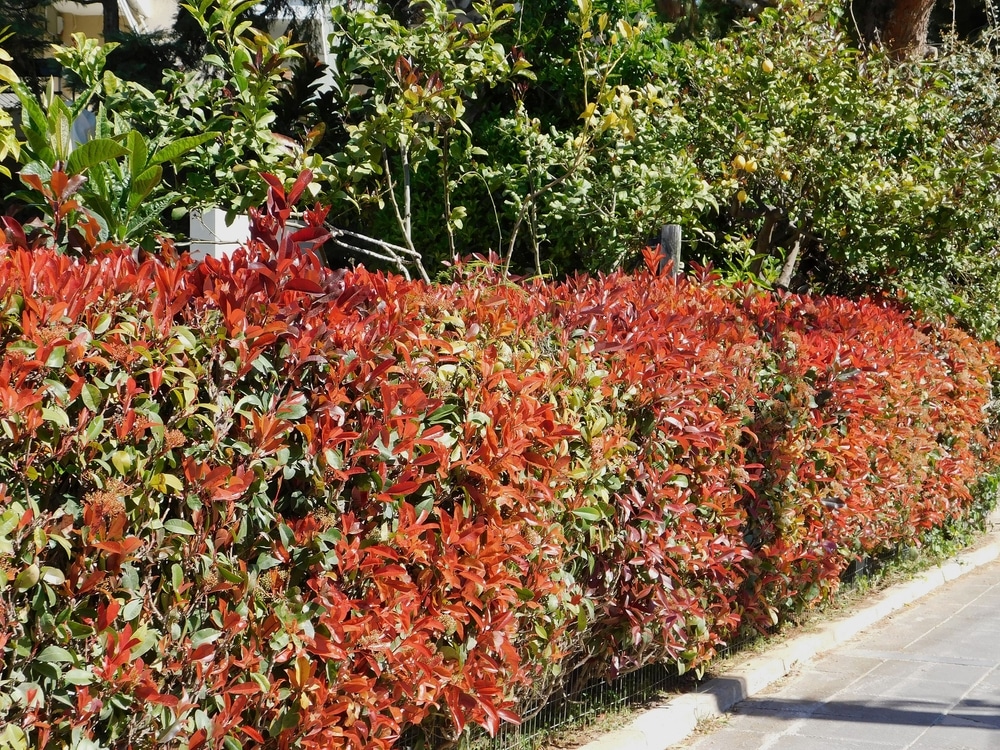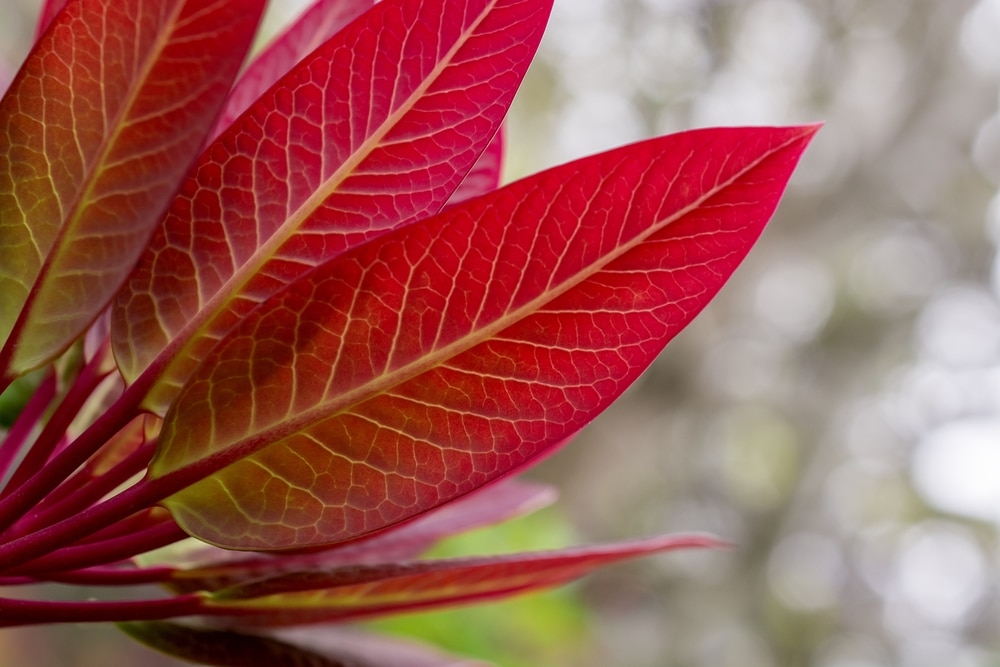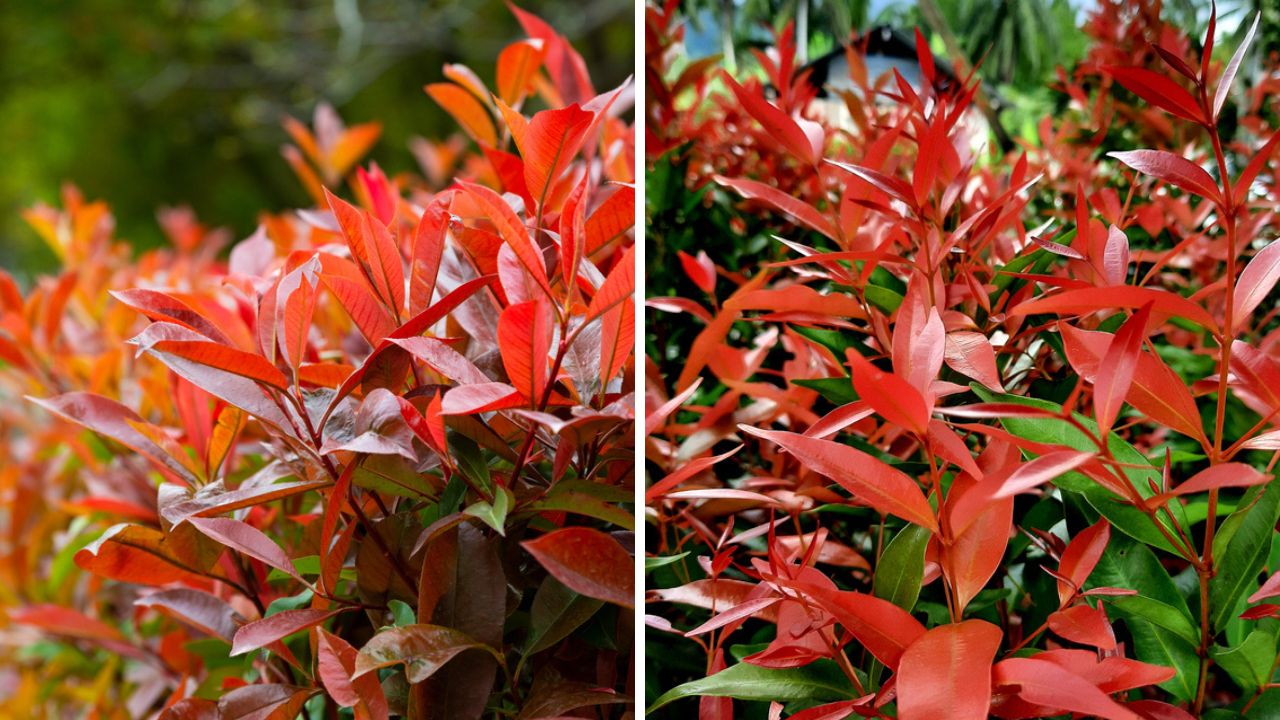In the intricate world of gardening, choosing the right plant can be both an art and a science. Among the myriad of choices, two standout contenders often captivate the attention of horticulturists and enthusiasts alike: Photinia Red Robin and Photinia Carre Rouge. As we delve into “Photinia Red Robin VS Photinia Carre Rouge: An In-depth Comparison,” we aim to provide a comprehensive analysis, shedding light on their unique attributes and differences. Whether you’re an expert botanist, a landscape architect, or simply an individual with a penchant for vibrant foliage, this comparison promises to offer valuable insights for your next gardening endeavor. Let’s embark on this enlightening exploration together.
Historical Background and Origin of Photinia Red Robin and Photinia Carre Rouge
The annals of gardening are replete with tales of plants that have woven themselves into the very fabric of our landscapes, and the Photinia family stands as a testament to this enduring legacy. For generations, these leafy wonders have held a cherished spot, adorning gardens with their vibrant charm. Yet, in recent times, the limelight has been particularly kind to two standout members: Photinia Red Robin and Photinia Carre Rouge.
Photinia Red Robin
Envision a classic painting that never fades with time; that’s Photinia Red Robin for you. With a history that spans several decades, this botanical gem has seen countless sunrises and sunsets, its striking red leaves dancing in the changing seasons. It’s this timeless allure, combined with its adaptability, that has endeared it to green thumbs everywhere, from the eager beginner planting their first shrub to the master gardener with soil-touched hands and years of wisdom.
Photinia Carre Rouge
Picture a starlet making a grand debut on the red carpet, turning heads and stealing the show. That’s the essence of Photinia Carre Rouge. Though it joined the garden scene more recently, its impact has been nothing short of sensational. With leaves that boast a profound shade of red and a growth pattern that’s compact yet commanding, it’s sparked passionate discussions and debates. The question on many lips: “Photinia carré rouge ou red robin?” As the intrigue around this plant grows, so does its legion of admirers.
| Attribute | Photinia Red Robin | Photinia Carre Rouge |
| Family Lineage | Part of the long-standing Photinia family. | A newer member of the Photinia family. |
| Historical Presence | Has graced gardens for several decades. | A more recent addition, yet impactful in its presence. |
| Primary Characteristics | Known for its enduring red leaves and versatility in gardens. | Recognized for its profound red hue and compact growth structure. |
| Popularity Over Time | Consistently a favorite due to its timeless appeal. | Rapidly gained attention, sparking debates like “photinia carré rouge ou red robin”. |
| Symbolism | Represents timeless beauty and adaptability in landscaping. | Symbolizes novelty, vibrancy, and modern gardening aesthetics. |
Together, these two plants represent a blend of time-honored tradition and refreshing novelty, each bringing its unique charisma to gardens worldwide. The dance of their leaves, swaying in harmony with nature’s rhythm, invites us all to stop, admire, and lose ourselves in their botanical ballet.
Key Characteristics of Photinia Red Robin

-
Physical Appearance and Growth Pattern
Picture a towering tree, standing proud and tall in the midst of a garden. That’s the essence of Photinia Red Robin. Growing to remarkable heights of 10-15 feet, it offers a lush, green canopy. Perfect for those seeking a touch of nature’s privacy, it provides a serene retreat right in your backyard.
-
Foliage
The real magic of Photinia Red Robin lies in its leaves. Starting with a radiant red, they gracefully transition to a rich green as time passes. This ever-changing display of colors is a constant topic of discussion, especially when comparing photinia carre rouge vs red robin.
-
Flowering and Fruiting Habits
As the warmer months approach, Red Robin adorns itself with clusters of pristine white flowers. These blooms eventually give way to shiny red berries, attracting a variety of birds and adding to the lively “photinia red robin vs carre rouge” garden conversations.
-
Climate and Soil
Some plants require precise conditions to thrive, but Red Robin is notably adaptable. Whether placed under the bright sun or in partially shaded areas, it flourishes. And though it has a preference for well-draining soils, it’s accommodating to various ground types, making the “photinia carré rouge vs red robin” and “photinia carré rouge ou red robin” debates even more intriguing.
-
Landscaping Uses
Red Robin’s versatility is truly commendable. Whether you’re planning a boundary of thick greenery or desire a standout centerpiece in your garden, it fits the bill. Discussions like “red robin carre rouge” often highlight its numerous gardening applications, proving its widespread appeal.
Key Characteristics of Photinia Carre Rouge

-
Physical Attributes
At first glance, the Photinia Carre Rouge might seem like your typical shrub. But spend some time with it, and you’ll quickly realize there’s more than meets the eye. This bushy beauty doesn’t stretch endlessly towards the skies but rather maintains a moderate height, usually settling between 8-12 feet. Its compact nature makes it a favorite for those looking for garden aesthetics without overwhelming space. Remember the “red robin carre rouge” comparison? Well, it’s this balanced growth that often draws the parallel.
-
Foliage
Every plant has its signature, and for the Photinia Carre Rouge, it’s undoubtedly its leaves. Imagine the richest shade of red you can think of. Now, paint a leaf with that color, and voila! You’ve got the Carre Rouge leaf. What’s even more impressive is how long these leaves retain their color. For gardeners who love a consistent color display, this feature of the “photinia carre rouge” is a massive plus.
-
Flowering Patterns
As if its stunning foliage wasn’t enough, come mid-spring, and Carre Rouge decides to throw a floral party. Adorning itself with clusters of pristine white flowers, it creates a visual spectacle against its dark-red backdrop. These flowers aren’t just a treat for the eyes; they’re a magnet for bees, butterflies, and other pollinators, bringing a buzz of life to your garden.
-
Blossoms in Spring
As the cold retreats and spring steps forward, the Photinia Carre Rouge dresses in its best attire. Adorning itself with clusters of delicate white flowers, it offers a visual treat that contrasts brilliantly with its dark leaves. And it’s not just a feast for the eyes; these blossoms attract bees, butterflies, and other pollinators, turning your garden into a lively hub of activity.
-
Climate and Soil
Some plants are like those high-maintenance friends we all have, but not the Photinia Carre Rouge. It’s undemanding and versatile. While it has a soft spot for places bathed in sunlight, it doesn’t shy away from partly shaded spots either. Soil-wise, its preference leans towards the well-draining kind, but it’s adaptable enough to cozy up to a range of soil conditions. This flexibility makes the “photinia carre rouge” a favorite among both novice gardeners and seasoned green thumbs.
-
Landscaping Uses
The compact growth of the Photinia Carre Rouge is both its charm and its strength. This trait makes it a sought-after choice for various landscaping needs. Be it defining the edges of your garden with a lush border, creating a focal point with a decorative patch, or even adding layers to a multi-tiered garden design, this plant rises to the occasion, every single time.
Photinia Red Robin VS Photinia Carre Rouge: The Main Differences
The “Photinia Red Robin VS Photinia Carre Rouge” debate is one that has been whispered among gardening circles for quite some time. Both these plants, hailing from the illustrious Photinia family, have left an indelible mark on gardens worldwide. Their striking similarities often lead to confusion, but as any seasoned gardener will tell you, it’s their differences that truly matter. As we delve deeper into this topic, we aim to provide clarity, ensuring you make an informed decision tailored to your gardening aspirations.
A Detailed Look at the Differences
| Characteristic | Photinia Red Robin | Photinia Carre Rouge |
| Size & Growth | Grows with a majestic presence, often reaching 10-15 feet. | More compact, giving it a bushier appearance, and maxing out at about 12 feet. |
| Foliage | A spectacle of color transformation, from vibrant red to mature green. | Deep red leaves are its signature, offering consistency in garden color schemes. |
| Flower Appearance | White flowers make a springtime debut, adding to its appeal. | Mid-spring is when it showcases its white blossoms, creating a visual treat. |
| Preferred Conditions | Flexible in its needs but has a soft spot for well-draining soils. | Sun-lovers rejoice! Carre Rouge thrives in sunny spots and is not too picky about soil. |
| Landscaping Uses | Standalone or as part of a tall hedge, it’s a versatile choice. | Given its compact growth, it’s a top pick for garden borders and decorative areas. |
| Maintenance & Care | Requires regular pruning to maintain its shape and health. | Being bushier, it might need more frequent trims to keep it looking its best. |
| Pest & Disease Resistance | Generally robust but watch out for common pests like aphids. | Shows resilience but like its counterpart, it’s best to be vigilant about pests. |
Caring for Your Photinia: Tips and Tricks

Whether you’re a seasoned gardener or a newbie looking to understand the intricacies of Photinia care, this guide aims to shed light on the dos and don’ts, ensuring your garden remains the envy of the neighborhood.
Watering
Water is the lifeblood of any plant, and Photinias are no exception. Whether it’s the Red Robin or the Carre Rouge, the trick lies in the balance. These plants prefer deep and infrequent watering. The goal is to ensure the soil remains moist, but not so wet that it feels like a soggy sponge. Overwatering can lead to root rot, while underwatering might stunt their growth. So, the next time you’re out with a watering can or hose, remember: it’s all about moderation.
Pruning
Pruning is like giving your Photinia a refreshing haircut. It not only keeps the plant looking neat but also encourages new growth. The Red Robin, being a hardy fellow, can handle a more aggressive trim. So, if you’re looking to shape it or control its size, don’t hold back too much. On the other hand, the Carre Rouge, with its more delicate demeanor, appreciates a gentler approach. A light trim, especially during its growing season, will keep it looking its best.
Fertilization
Think of fertilization as a spa day for your Photinia. A balanced fertilizer, especially during the spring, gives them the nutrients they need to stay vibrant and lush. While they aren’t overly fussy about the type of fertilizer, it’s a good idea to stick to a well-balanced one. This ensures they get a mix of all the essential nutrients, paving the way for healthier growth.
Pests and Diseases
The bane of any gardener’s existence. Both the Red Robin and Carre Rouge, in their journey, might encounter a few uninvited guests like aphids or face issues like leaf spots. The key is regular checks. Think of it as a routine health check-up. If you spot any issues, prompt treatment is crucial. Whether it’s a natural remedy or a store-bought solution, acting quickly can save you a lot of headaches down the road.
| Care Aspect | Photinia Red Robin | Photinia Carre Rouge |
| Watering | Deep, infrequent watering. Moist, not soggy. | Deep, infrequent watering. Moist, not waterlogged. |
| Pruning | Can handle aggressive trims. | Prefers gentle trims. |
| Fertilization | Balanced fertilizer in spring. | Balanced fertilizer in spring. |
| Pests & Diseases | Watch for leaf spots & aphids. | Regular checks for aphids & treat leaf spots. |
Conclusion: Deciding Between Carre Rouge and Red Robin for Your Garden
When it comes down to picking between Carre Rouge and Red Robin, it’s like choosing between two amazing desserts – you can’t really go wrong! If you’re someone who loves a plant that grows tall and offers a beautiful color show as its leaves change from bright red to green, then Red Robin might just be your pick. On the flip side, if you’re drawn to a plant that keeps its deep red shade consistently and doesn’t grow too tall, giving a bushy feel to your garden, then Carre Rouge is calling your name. Take a moment to picture each in your garden space, consider the look you’re going for, and trust your instincts. Both are fantastic choices, and your garden will thank you!
Frequently Asked Questions
1. What makes Photinia Red Robin stand out in a garden?
Photinia Red Robin is a showstopper with its leaves that dazzle in a bright red when young, slowly maturing to a rich green. Its tall stature and the visual treat of color-changing foliage make it a favorite among many garden enthusiasts.
2. I’ve heard a lot about Carre Rouge’s consistent color. Is it true?
Absolutely! Photinia Carre Rouge is known for its deep red leaves that stay true to their hue for a long time. If you’re someone who loves a steady splash of color in your garden without much change, Carre Rouge is your go-to.
3. Are both these plants high maintenance?
Not really! Both Red Robin and Carre Rouge are pretty adaptable. While they appreciate some love in the form of regular watering, pruning, and occasional fertilization, they’re not overly demanding. A little care goes a long way with these beauties.
4. Which one is better for smaller gardens or limited spaces?
If space is a constraint, Photinia Carre Rouge, with its compact and bushier growth, would be a more fitting choice. It allows you to have the beauty of Photinia without overwhelming a smaller garden.
5. Can I grow both Photinia Red Robin and Carre Rouge together in my garden?
Of course! Both plants can coexist beautifully in a garden, complementing each other. The transitional foliage of Red Robin paired with the consistent hue of Carre Rouge can create a captivating visual contrast.
6. Do they attract any pests or diseases I should be wary of?
Like many plants, they can occasionally be visited by pests like aphids or face issues like leaf spots. Regular checks and timely interventions can keep these concerns at bay.
7. Are they suitable for different climates?
Both Red Robin and Carre Rouge are fairly adaptable. However, it’s always a good idea to check their suitability for extreme climates. Generally, they thrive in mild to temperate zones.
There you have it—a comprehensive dive into “Photinia Red Robin VS Photinia Carre Rouge”. Regardless of your pick, your garden will thank you for it! Ready to plant? Happy gardening!

